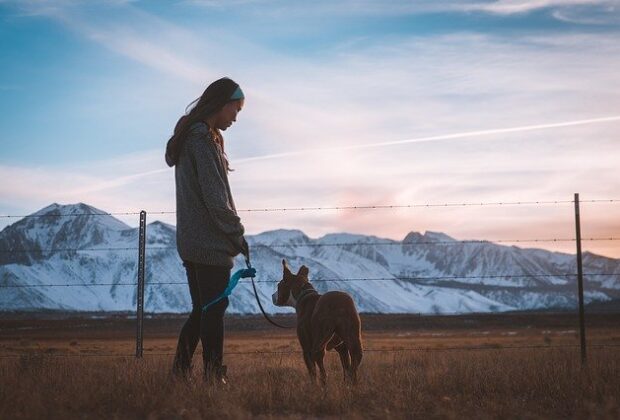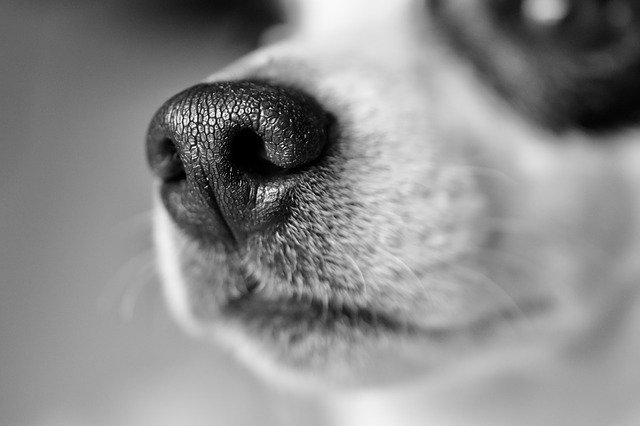So, you really want to start enjoying the outdoors with your new puppy, but then you begin to wonder, is it old enough to start walking or even be held by a leash? So, how early should you start walking a puppy? Should you even be walking a puppy? So many questions!
In this article, we’ll discuss all you should know about walking/leash-walking a puppy, what to do before you start walking a puppy, and why puppies should be walked, among other details we think you will find helpful.
Vaccines First Before Walking
Before you start leash-walking/walking your puppy outside your home, you want to make sure that it has had all of the required puppy vaccines, including the ones for rabies. Usually, these vaccines are completed around the 14 – 16th week though sometimes earlier.
The outdoors, especially visits to places other pets and their owners frequent, can expose your dog to potentially harmful viruses and parasites. You want to make sure that it is fully prepared to deal with such exposure. If you can, let the walking start around the 20th week, as puppies are usually fully vaccinated around this age.
Walking a Puppy
You can start walking your dog on the 16th or 20th week after the vaccinations. You want to make sure that hot or rough pavements are avoided during the walks. This is simply because our canines’ paw pads are still very tender, and walks on hard or hot pavements can cause their paw pads to become sore, especially long walks.
With large breeds, you want to be particularly careful with the length of the walks as these are prone to developing growing pains known as Panosteteitis due to their rapid growth rate. This disorder is commonly marked by symptoms such as bone pain and lameness in one or both front limbs.
While exercise restrictions can help, a vet’s intervention might be needed in some cases. You may also need to seek your vet’s opinion on safe distances for your newly walking puppy.
Leash-Training Your Puppy at Home
Leash-training is one thing you want to do even before you start letting your dog out in public. Thankfully, you can do it at home and by anybody. Yes, it is that simple. Start by placing your dog on a leash and leading it to the far corner of your backyard or anywhere else you want it to do its business instead of just letting it use the entire backyard as a toilet.
You can also leash-walk the dog to its sleeping area and around the house to help it grow used to the leash before the walking starts properly.
Leash-Training Dos and Don’ts
Here are some leash training tips to keep in mind when leash-training a puppy;
Your pup should follow your lead
Teach your pup to follow you on a walk early in the leash-training session. While a small dog, when allowed to pull on the leash, can do no harm or even escape, the same dog, once it grows, can cause injuries to you or flee if allowed to pull you around during a walk.
When leash-training a dog, let it have all four paws to the ground before attaching it to the leash, and when it is calm, place the leash and start the walk. If you feel any tension on the leash from the dog, go the other direction, even if it means walking in a circle at first. The whole idea is to ensure that your dog knows that it follows you and not you following its lead.
Another thing you can do when your pup starts pulling in another direction is to remain still. Stand in one position and avoid moving until your dog walks back to you. Also, avoid jerking or yanking the leash in a bid to drag the dog along with you.
Redirect your dog’s attention
If your dog goes after something or someone during a walk, you can redirect its attention with a treat, ensuring there is enough space between your dog and the target. You do not want accidents/hostilities between your dog and the target, so stay alert and maintain a reasonable distance between both.
Dogs Barking During Walks
Barking is normal in dogs and expected. However, if your dog seems to never stop barking at other dogs or people during walks, it might simply be stemming from inadequate exercises.
All dog breeds need to be cared for and exercise is an important form. The amount of exercise needed though can depend on the breed. Make sure your dog gets enough exercise for its age and breed, and if it continues to bark, offer treats any time the barking begins, even as you create a reasonable distance between the dog and any target.
When to Start Walking a Puppy: Conclusion
Puppies need exercises even at the puppy stage, and walking can be a good way for them to get some quality exercise and also help it “go.” While walking is arguably one of the most straightforward exercises for canines, you want to ensure that all essentials such as vaccines and leash training have been covered before you begin.
About the Author
Kirsten Heggarty
Kirsten created The Pet Handbook with the aim of sharing her knowledge about pets, pet food, healthy habits, and more. All of her advice is based on years of her own experience with her pets, and feedback that she has received from grateful readers about her tips. If you want to know more please read the About Me page.









